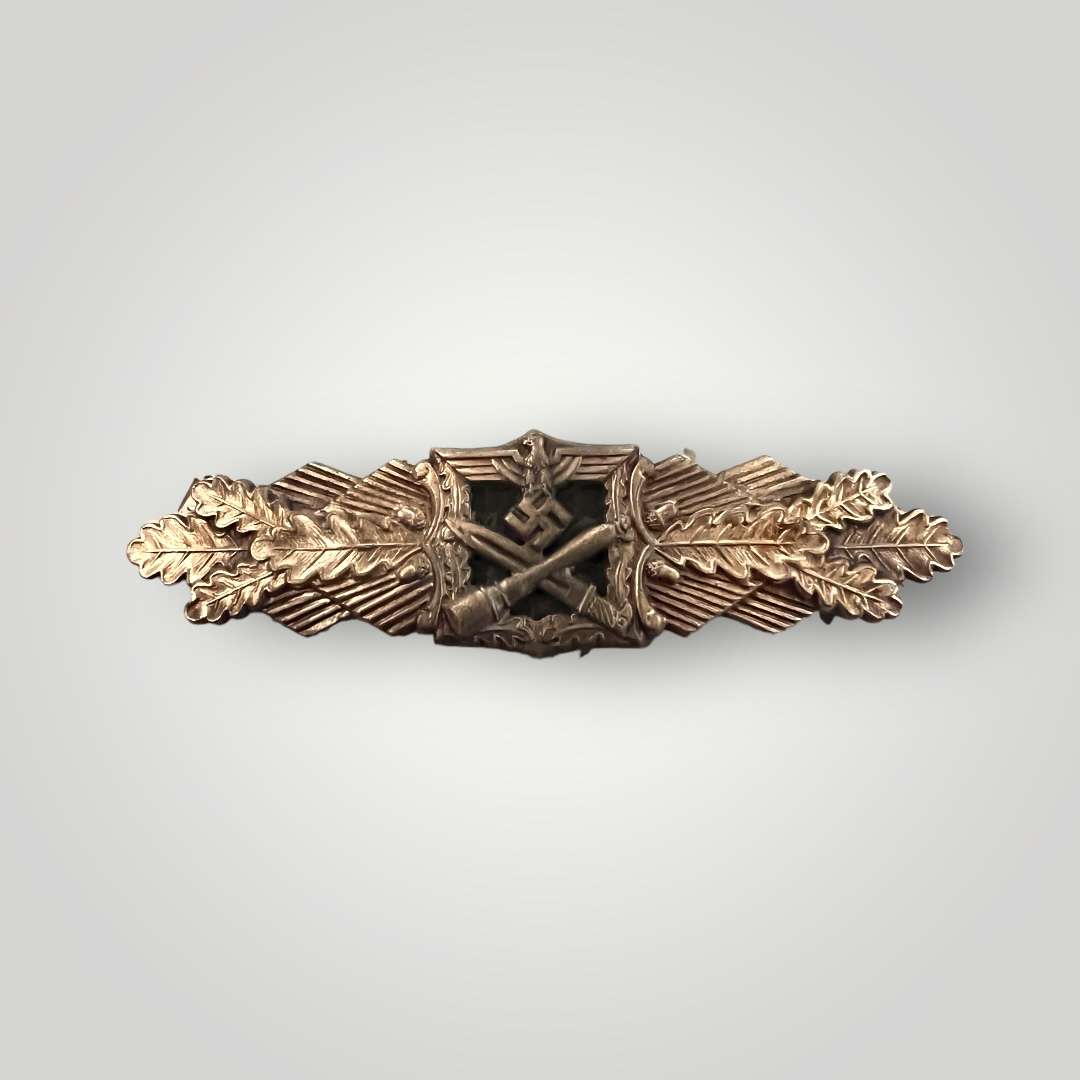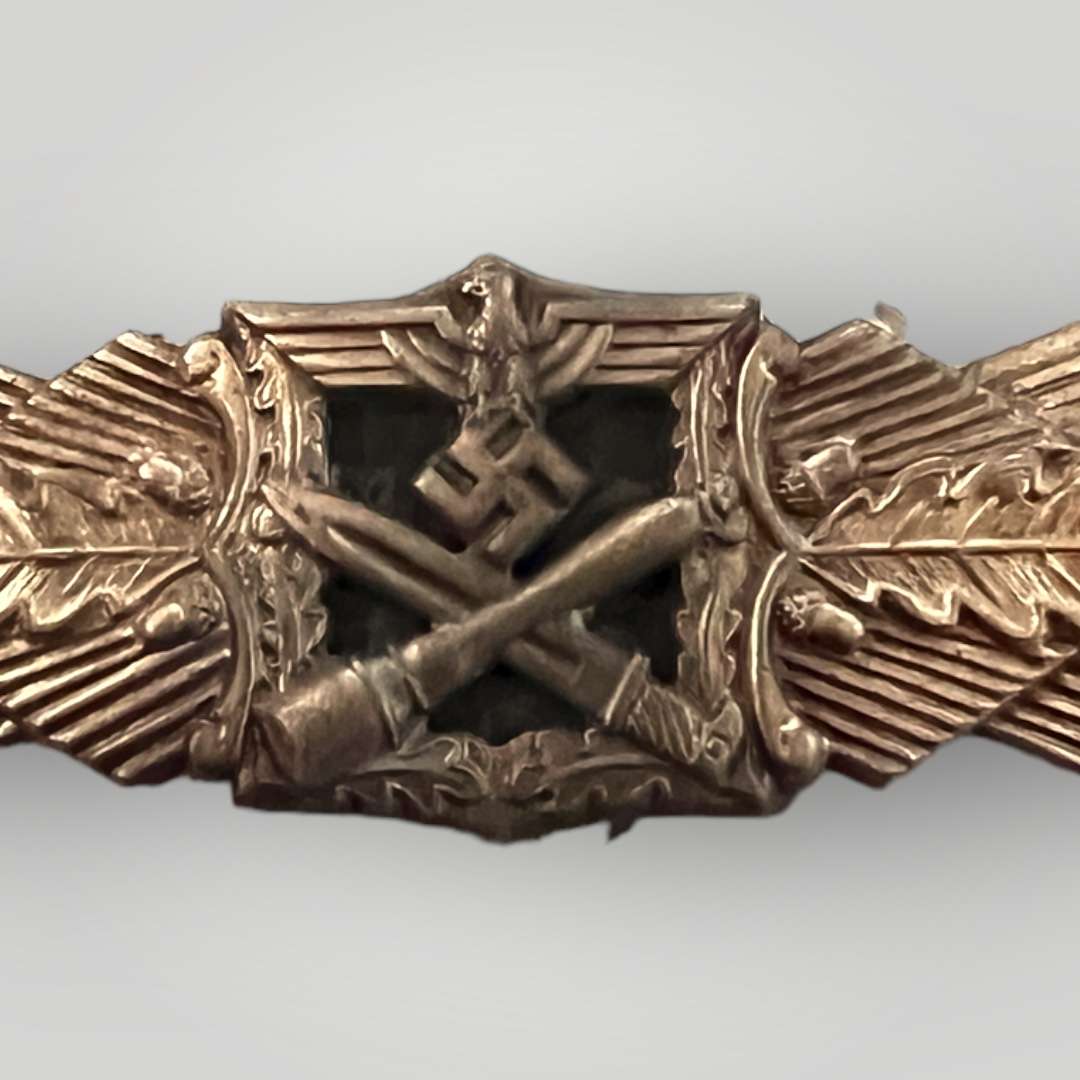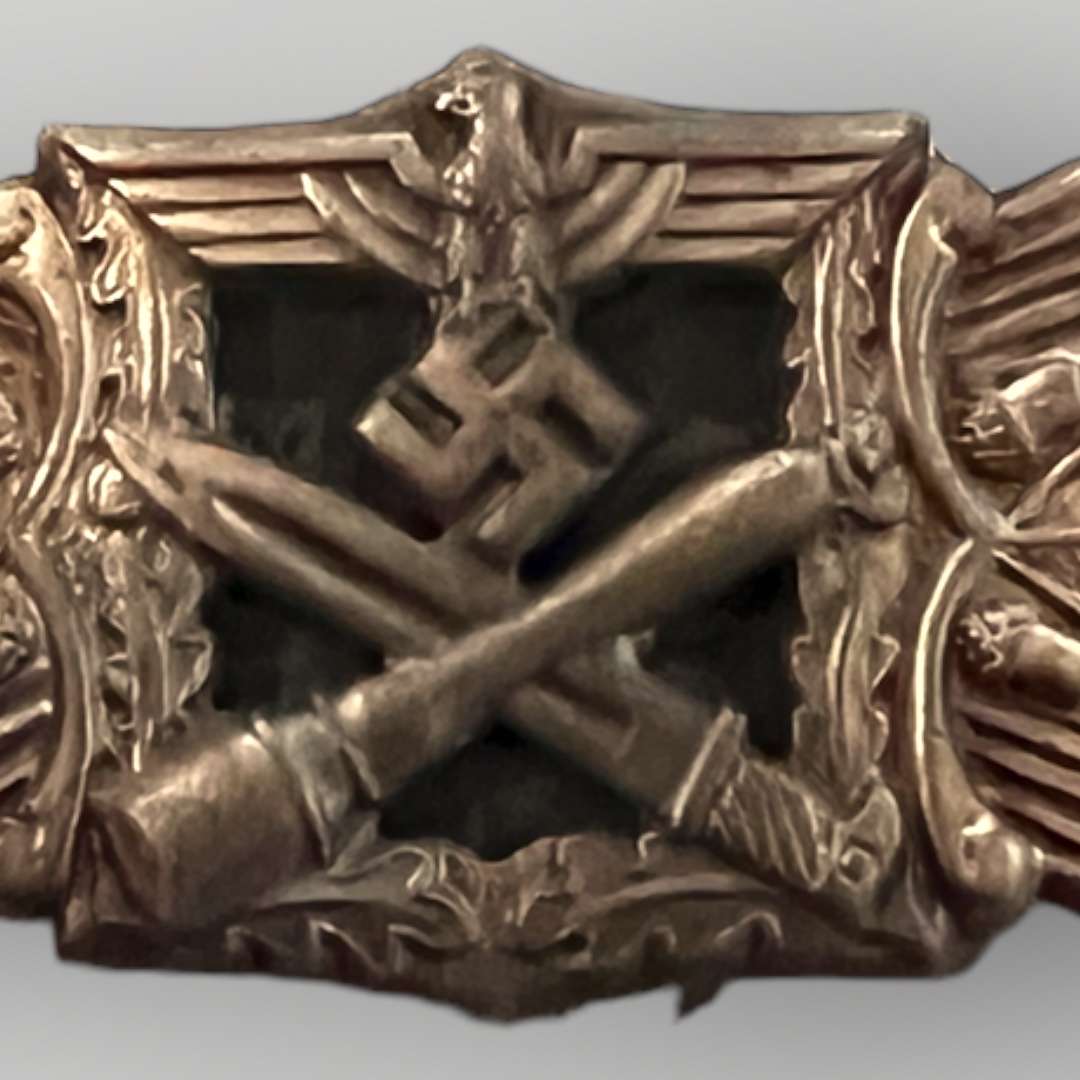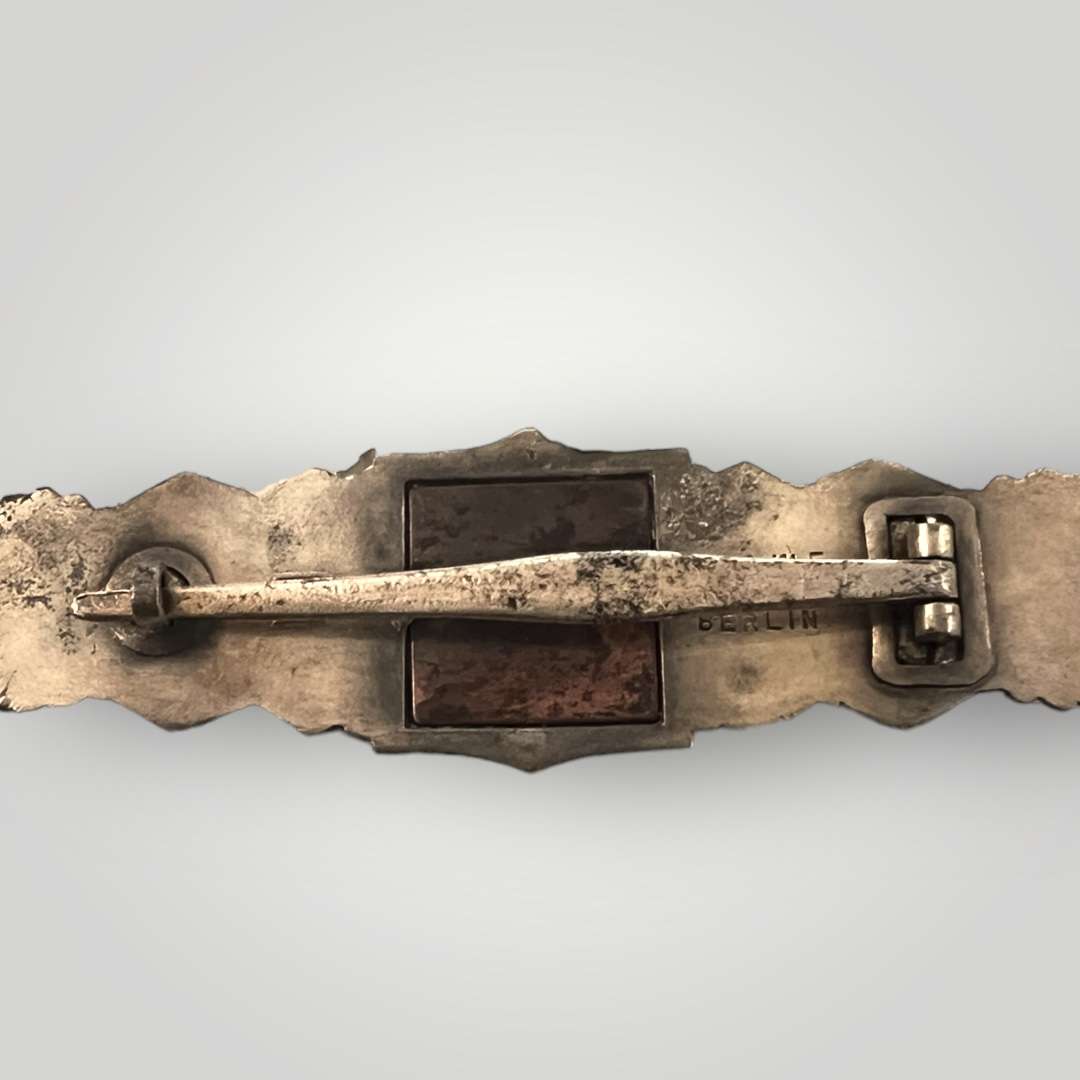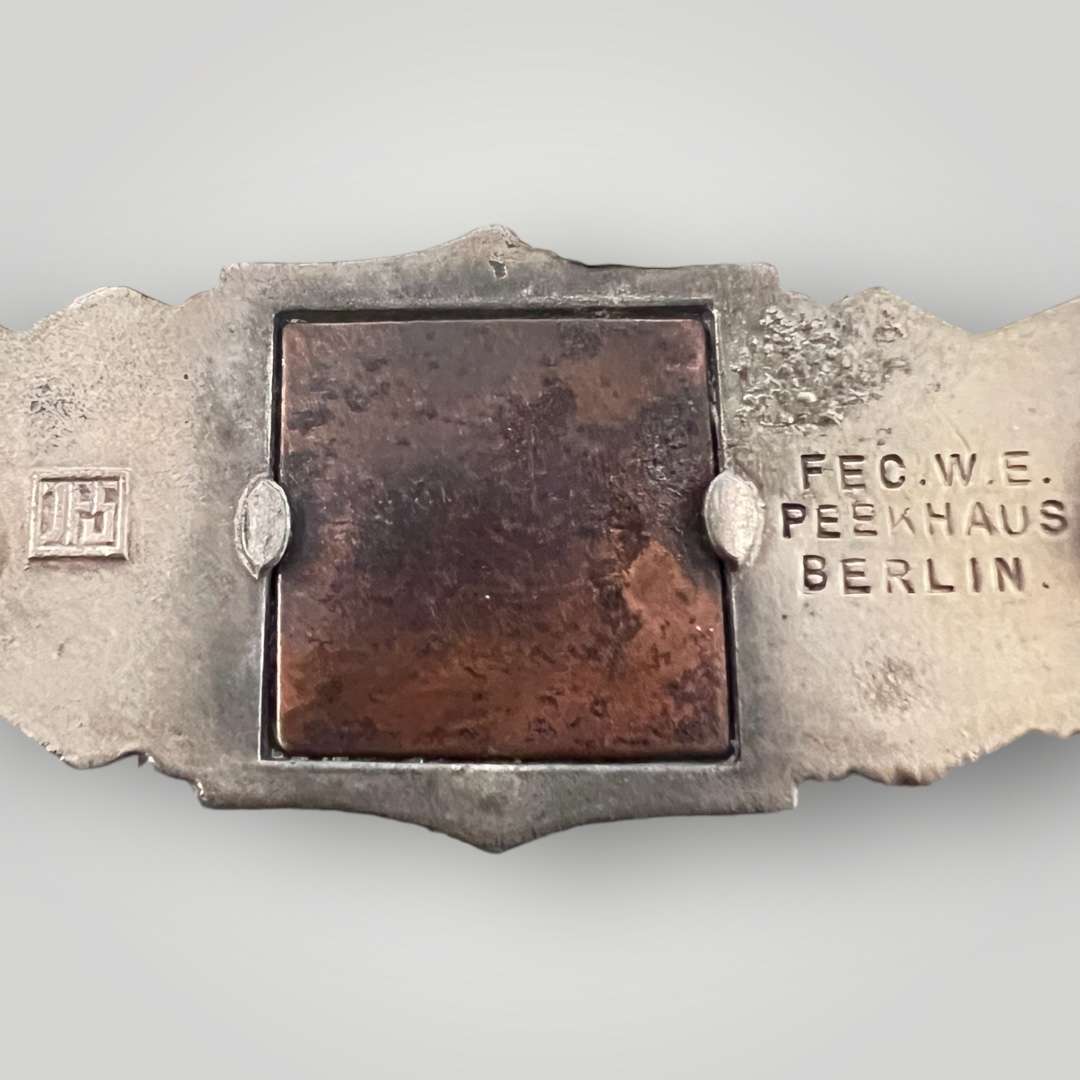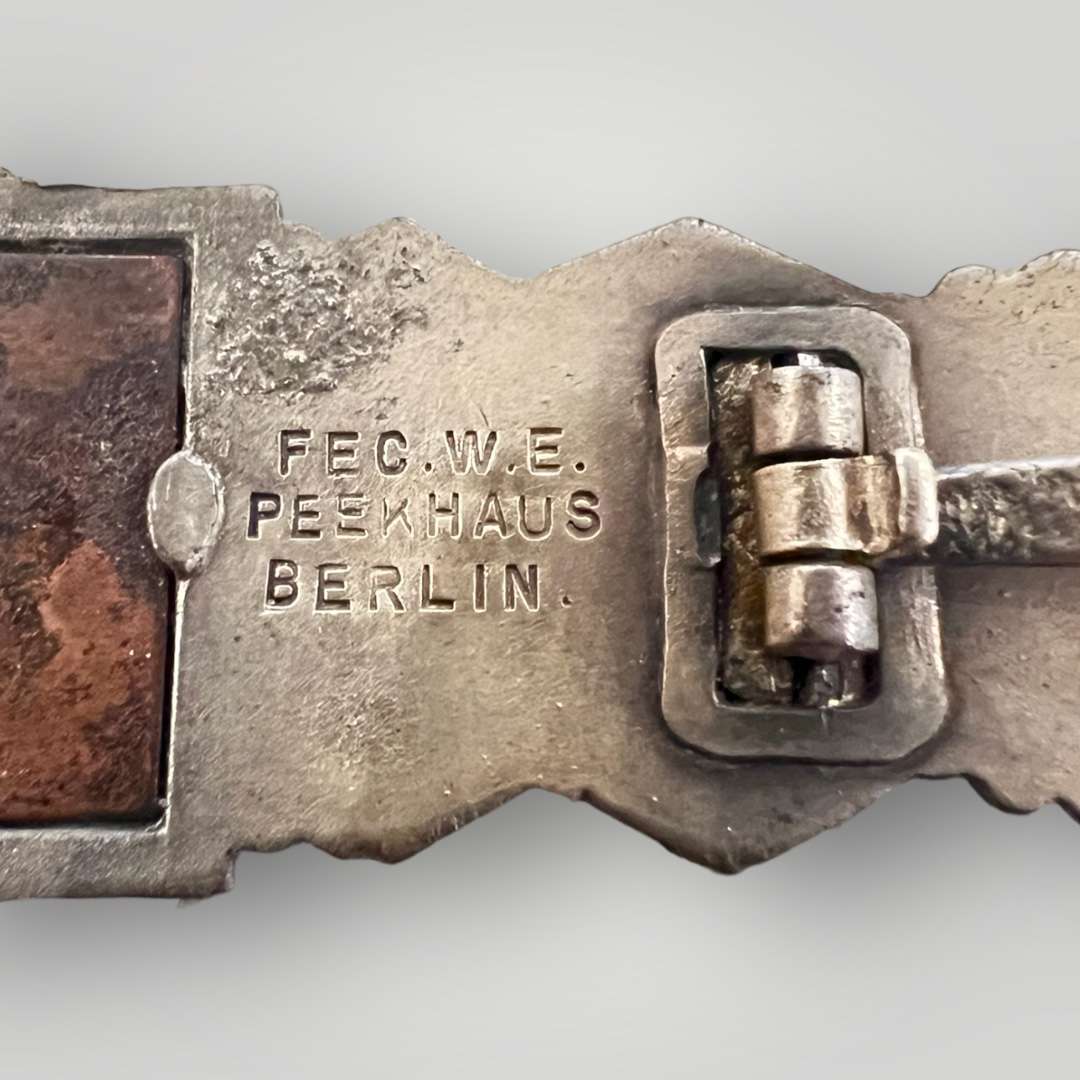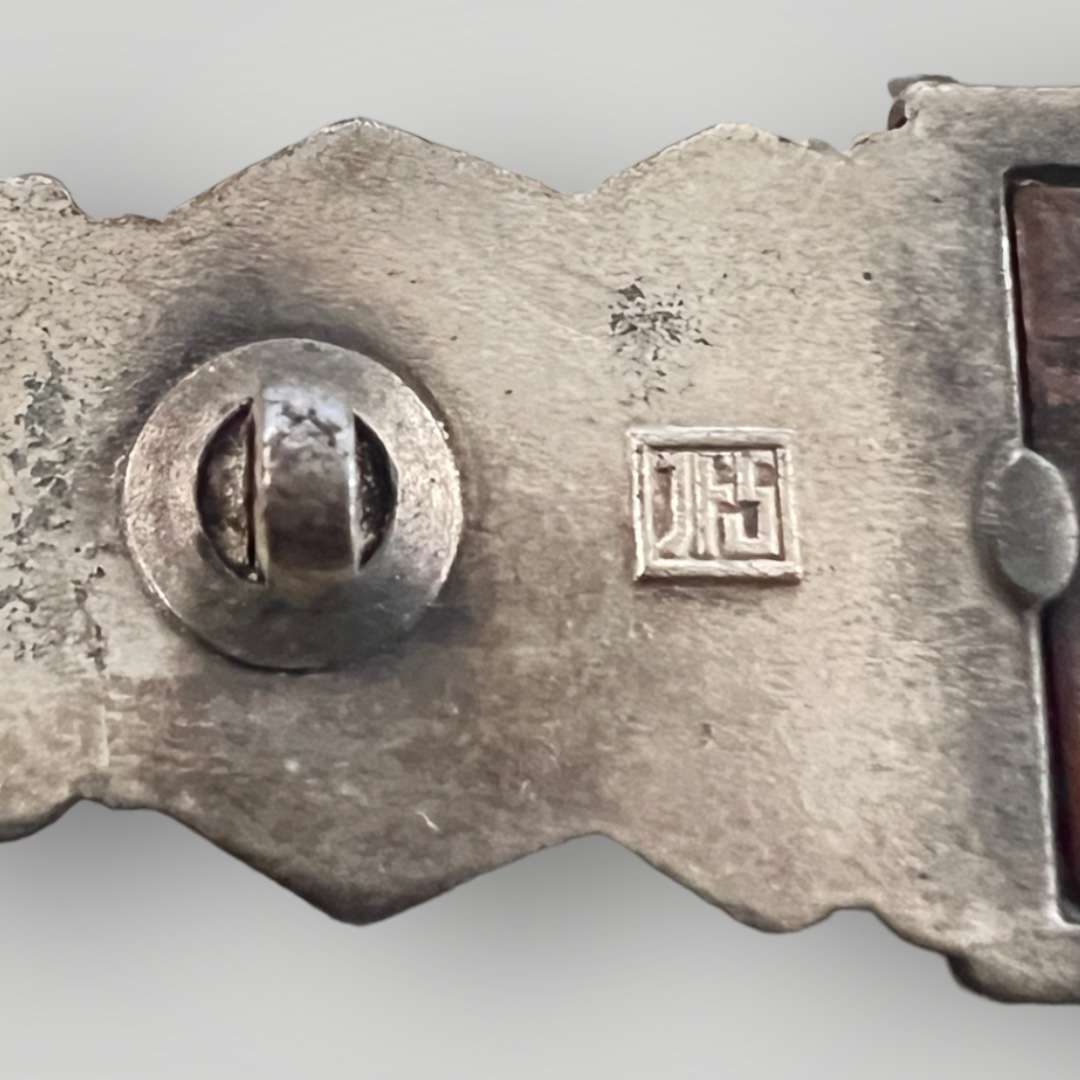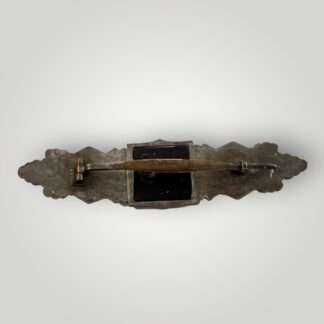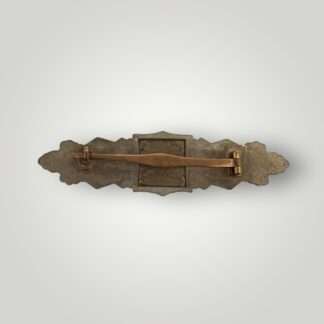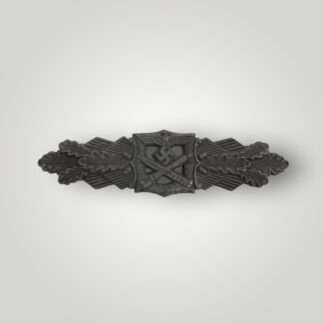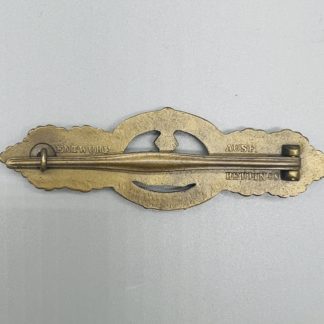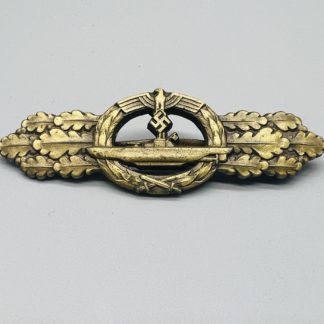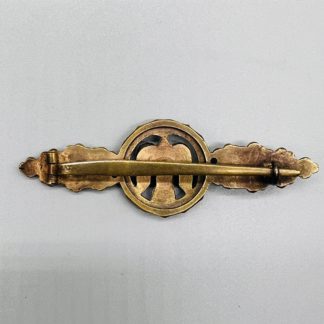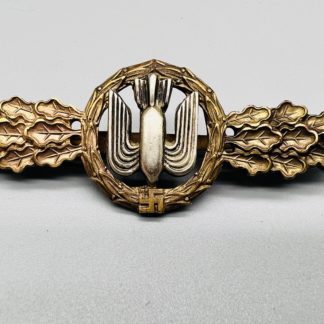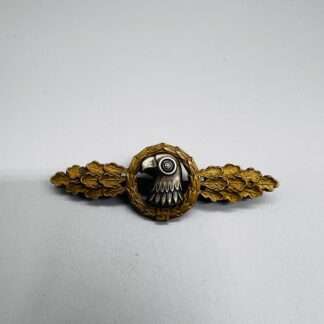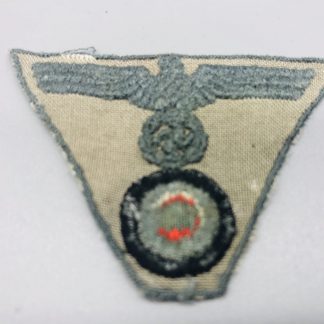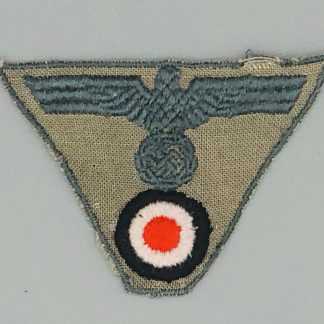Description
Close Combat Clasp Silver
The Close Combat Clasp (Nahkampfspange) is a German military award instituted on 25 November 1942 for achievement in hand-to-hand fighting in close quarters. The Close Combat Clasp was worn above the upper left uniform pocket. The clasp was die-cast and made of either tombac or later zinc, with a slightly curved and hand centerpiece consisting of the national emblem surmounting a crossed bayonet and hand grenade.
The award was bestowed in three classes:
- For 15 battles of close combat clasp bronze class was awarded.
- For 25 battles of close combat clasp silver class was awarded.
- For 50+ battles of close combat gold clasp class was awarded.
In order to receive this distinguished decoration, all battles and their dates had to be officially documented by the battle commander, verified by the general in charge, and authenticated by several divisions of the war department. It was possible that more than one close combat battle per day was fought and therefore recorded as a separate entity.
An exemption was made if the soldier was wounded in battle so badly that his injuries precluded a return to the front. In such a case, the criteria were reduced to 10, 20, and 40 battles. The highest number of battles in combat recorded is listed at 84 by SS-Hauptscharführer Hermann Maringgele.
The Gold Close Combat Clasp was often regarded in higher esteem than the Knight’s Cross of the Iron Cross by the German infantry. Of the roughly 18–20 million soldiers of the German Wehrmacht and Waffen-SS, 36,400 received the Bronze Class, 9,500 the Silver Class, and 631 the Gold Class.


